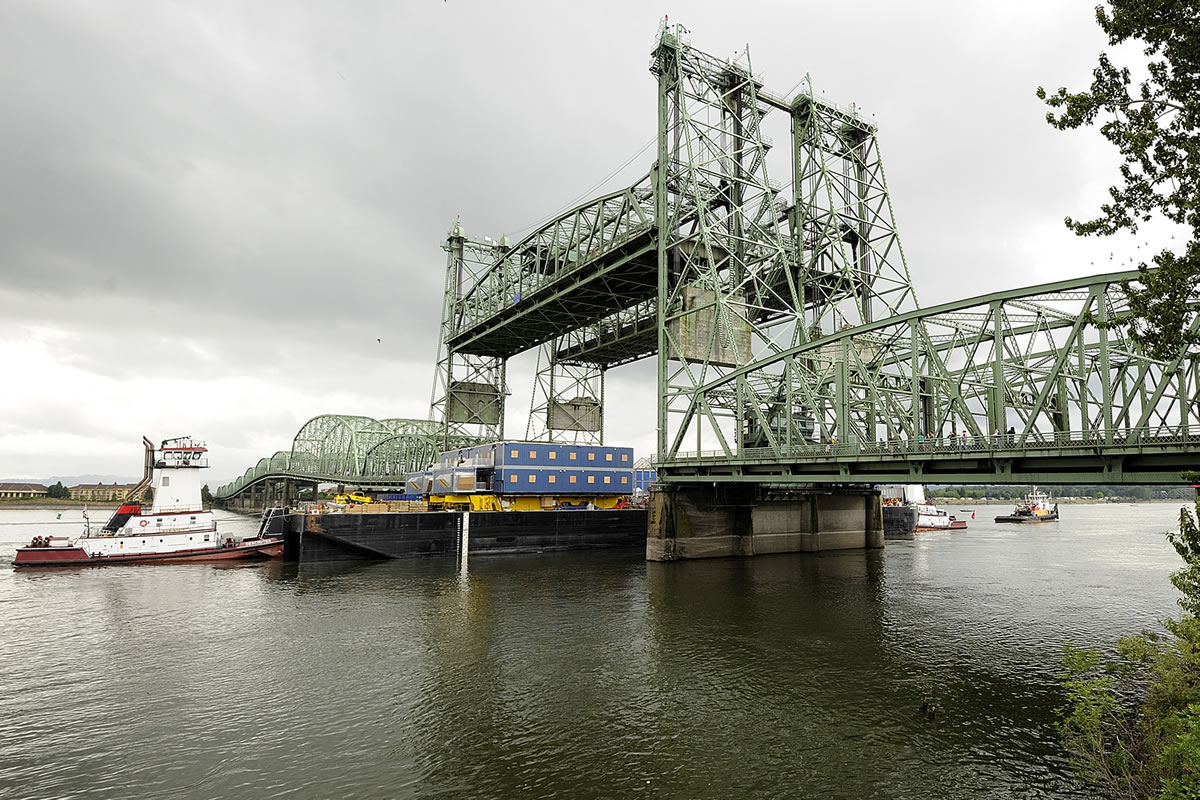The U.S. Coast Guard can allow a Columbia River Crossing design that blocks some existing vessels on the river — but only if the project shows it has done everything it can to avoid that outcome when possible, a Coast Guard official said Wednesday.
That’s part of the agency’s responsibility of “looking out for the reasonable needs of navigation, and making sure they get addressed,” said Coast Guard Capt. Michael Gardiner, a prevention division chief based in the agency’s 13th District in Seattle.
Gardiner attended an open house meeting in Vancouver, which invited the public to get a closer look at the process that’s led the CRC to analyze various bridge heights for the proposed $3.5 billion Interstate 5 Bridge replacement.
Project officials had long planned on a design with 95 feet of fixed clearance over the water, until the Coast Guard and others rejected that level as too low to meet the Columbia River’s navigation and economic needs.
The CRC has spent recent months studying various bridge heights above 95 feet. Project officials hope to settle on a number next month. But it’s up to the Coast Guard, which holds bridge permitting authority over the project’s centerpiece, to determine whether that number — and the process that led to it — passes muster.
“The lower you want to build a bridge, the more impacts there are, the more complicated it becomes,” Gardiner said.
The CRC’s analysis shows it can push the bridge height up to 110 feet with only “modest” changes to the project’s design and cost. But that would still potentially impact 20 vessels. Raising the bridge to 120 or 125 feet would drop that number to eight vessels, but could add $176 million to the price tag and dramatically expand the CRC’s footprint in downtown Vancouver, according to the analysis.
The current I-5 Bridge allows up to 178 feet of clearance when lifted.
Among the mitigation measures the CRC has suggested are towing impacted vessels around the bridge by land, forcing them to permanently stay upriver of the bridge or downriver, or simply purchasing them and taking them out of service. But the Coast Guard has previously told the CRC it should focus more on changing its own design, rather than expecting river users to change for it.
Having those suggestions on the table doesn’t necessarily mean they’ll all be pursued, said Jay Lyman, the CRC’s bridge permit task leader. It’s part of the analysis that will ultimately lead to filing a bridge permit application, he said.
“We’ve been working very closely with the river users that we anticipate will be impacted,” Lyman said.
The Coast Guard hasn’t formally responded to the CRC’s latest bridge height analysis, Gardiner said. That could happen by early next month. The CRC hopes to file its bridge permit application by the end of January, Lyman said. That’s one of several crucial hurdles the project must clear to move forward.
Wednesday’s open house was well-attended, drawing more than 100 people. Opinions ranged from “build that bridge” to “what a colossal waste of money.”
A few contractors who attended the meeting said they’d like to see the project move forward for the construction jobs it would bring to the region. Portland resident Jack Patrizio said he generally favors the project, but worries about the economic impact of restricting existing traffic and manufacturing on the river.
“I’m concerned by the impact to family-wage jobs,” Patrizio said.
In addition to replacing the I-5 Bridge, the CRC would extend light rail into Vancouver and rebuild the freeway on both sides of the Columbia River. Project leaders have said they hope to begin major construction by late 2014.
Eric Florip: 360-735-4541; http://twitter.com/col_enviro; eric.florip@columbian.com.




